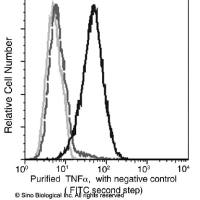The CRE Luc Mouse Model for Bioimaging Ligand Activation of G Protein-Coupled Receptors
互联网
互联网
相关产品推荐

Mouse Reactive Alzheimer's Disease Model Microglia Phenotyping IF Antibody Sampler Kit
¥500

Coronavirus spike重组蛋白|Recombinant SARS-CoV-2 Spike S1(D614G)-His Recombinant Protein,HPLC-verified
¥4500

TNF-alpha / TNFA / TNFSF2 Antibody, Mouse MAb | TNF-alpha / TNFA / TNFSF2 鼠单抗
¥800

Rat PPAR-α (Peroxisome ProlifeRators Activator Receptors alpha) ELISA试剂盒
¥960

LUC7L3/LUC7L3蛋白Recombinant Human Luc7-like protein 3 (LUC7L3)重组蛋白Cisplatin resistance-associated-overexpressed protein;Luc7AOkadaic acid-inducible phosphoprotein OA48-18cAMP regulatory element-associated protein 1 ;CRE-associated protein 1 ;CREAP-1蛋白
¥1344
相关问答

